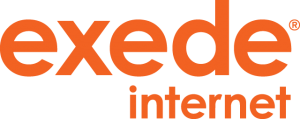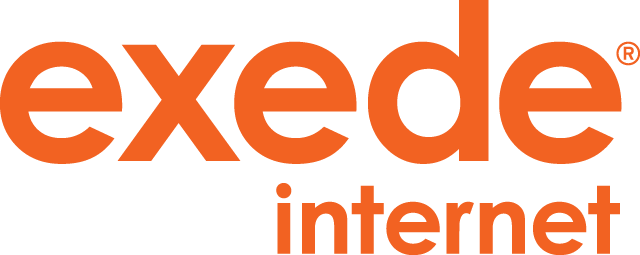Satellite Internet Reviews
Welcome to satellite-internet-reviews.com! This site is dedicated to providing the consumer the best and most up to date information regarding the purchase of a Satellite Internet System. We not only provide our recommendations but specifically focus on the features and benefits of each Satellite Internet Service provider and their individual product offerings. Additionally, we provide the consumer with the highest quality information regarding the history, operation and comparative shopping tips for satellite Internet companies.
Satellite Internet Rankings
#1 – dishNET
 |
 |
|
#2 – Exede
 |
|
#3 – HughesNet
 |
|
#4 – WildBlue
 |
|
How Many Satellite Internet Providers Are Out There?
Satellite Internet is a competitive marketplace, although there are relatively few players as the cost of launching a satellite is very expensive – in the area of $300 million to $500 million. This technology is only about 20-25 years old and is improving at a rapid pace. We expect that trend to continue, which is why we will keep you updated as to new improvements in technology and the best value for your purchase. There are many choices in the satellite Internet arena as respects individual plans, speeds, bandwidth, etc. We focus our analysis on the two leading satellite internet providers, Viasat, Inc, known as Exede and Hughesnet. DishTV partners with Hughesnet and DirectTV partners with Exede to offer a bundled approach of satellite Internet and satellite TV at a reduced rate. We also include WildBlue which was Viasat’s original satellite internet serviceprovider name, although they are switching many of their customers from WildBlue to Exede in recognition of faster speeds, etc. It is our hope that we can provide you the best information available to make your decision an easy one in your purchase of a satellite Internet system.
Satellite Internet Comparisons
How Satellite Internet Works
So how does satellite Internet deliver you high speed Internet services? Well, it all begins with the concept of a geostationary satellite placed about 22,000 mile above the earth. Geostationary means a satellite that rotates at the same speed as the earth at the equator. It is this concept that enables your own personal satellite dish, modem and computer to constantly communicate with the “mother” satellite orbiting in space. Otherwise you would only occasionally be able to communicate with the orbiting satellite when it “lines up” with your dish antenna. There are a few components that you need to complete the system necessary for effective satellite Internet communication.
Satellite Dish – You need to have a satellite dish that has an unobstructed view of the southern sky as the satellite orbits the earth at the equator, if you live in the US. In the early days of satellite Internet, it was commonplace to have a satellite dish that was 10ft. or more in diameter. However, new technology known as DBS (Direct Broadcasting System) has minimized this size to about 18”. This technology contributed greatly to the popularity of satellite Internet technology as you were no longer required to have that “albatross” of a dish in your yard. It can be mounted on your house or separately on a pole in your yard as long as you have a clear view of the southern sky. Most installations these days are mounted on your roof.
Modem – A modem is needed to translate the signals received by your satellite dish to those that are useable by your computer. The modem is similar to the that needed for delivery of cable Internet service. Most satellite Internet services require you to lease the modem and satellite dishes for about $10 monthly, however, there are some services that allow you to purchase the equipment that may be beneficial in the long run, depending on your forecasted prescription to satellite Internet services.
Operations Center – Your satellite Internet provider will have a “ground” operations center of some kind. This facility normally has huge satellite dishes that receive and transmit data to the main orbiting satellites. When you request a specific site on the internet, the data is transmitted to the orbiting satellite, then back to the ground operations center, then back to the orbiting satellite, then back to your dish at home and ultimately, your computer. That is a long way to travel but it is accomplished in a fraction of a second. This small delay, known as latency, should not affect regular use of your computer with applications such as browsing the web, e-mails, videos, etc.
Orbiting Satellite – The main component of a fully integrated satellite Internet system is the orbiting satellite that captures information from literally millions of customers. Rudimentary satellites that were Internet capable launched in the mid- 1990’s offered only about 256Kbps download speeds. As of late, Viasat, Inc. and Hughes have launched satellites that deliver download speeds of 12 Mbps or more. Although the expense of launching communication satellites is very expensive ($500 million or more) it is a likely assumption that competition and the ever expanding demand for satellite Internet technology will produce a more efficient and cost effective product in the future.
Accordingly the components of an integrated satellite Internet system are relatively few, as compared to all the transmissions that are performed. We feel confident that the relatively minor problems associated with multiple transmissions will be minimized or alleviated as this technology continually progresses. There have been tremendous strides made in satellite Internet technology over the past few years and we envision that will continue, thereby establishing satellite Internet as a viable alternative to DSL and Cable.
How did Satellite Internet Get Started?
Satellite Internet follows the same general path of that of Satellite Television. Back in 1945, a British science fiction writer, named Arthur C. Clarke envisioned the use of orbiting satellites to improve global communication. The first satellite was launched by the Russians in 1957 called Sputnik 1. Subsequently, the United States launched their first satellite, Explorer 1, in 1958. The first communication satellite, Telstar 1, was put into operation in 1962.
The concept of a geostationary satellite was integral to the success of using satellites for communication and eventually satellite TV and satellite Internet. A geostationary satellite means the satellite rotates at the same speed as the earth, so ground stations are always “looking” at the same satellite. The placement of a geostationary satellite is in an orbit approximately 22,000 miles above the earth and the equator. That is why people in the Northern Hemisphere must point their satellite dishes toward the southern sky, and conversely, toward the northern sky when located in the southern hemisphere. The first satellite to achieve geo-stationary orbit was Syncom 3, built and launched in 1963. These satellites were initially used for communications, military applications and television in a limited way. Further advancements and the advent of the Internet in the 1990’s provided a fertile environment to explore the possibilities of fusing satellite technology and the Internet.
In the early 2000’s the satellite Internet industry launched “high throughput” satellites that offered the first experience with broadband Internet via satellite technology. The early models provided relatively slow upload and download speeds, but were clearly good alternatives to dial-up internet. The advancements have now led to very high capacity satellites that currently offer download speeds of 15Mbps and upload speeds of up to 3 Mbps. These speeds rival that of DSL and Cable and most importantly provide high speed Internet access to those in rural areas that do not have access to cable.
The latest technologically advanced satellites launched by Viasat, Inc. and Hughes in the last couple of years offer a truly high speed experience for satellite Internet. The competitive technological and marketplace forces promise to deliver an even greater menu of satellite Internet services in the future.
Satellite Internet Speeds and Bandwidth Capacities
Satellite internet has progressed from a minimal download speed of 500Kbps and upload speed of 250Kbps to speeds of up to 12-15Mbps download and 3Mbps upload, an astonishing 50 times faster than just a mere fifteen or so years ago. Improved satellite technology and ground operation centers have led to these significant advances. In the last couple of years, Hughes Corp. and Viasat, Inc. have launched much more advanced satellites that enable these increasing levels of speed. As a reference point, Cable download speeds in a comparable price range vary from 10Mpbs – 20 Mbps download and 4-5 Mbps upload. Accordingly, satellite Internet is making great strides and is offering the public without cable access a competitive package of services relative to Internet speeds and bandwidth capacities.
One significant difference between cable internet and satellite Internet is bandwidth allowance. Bandwidth can be simply characterized as “how much data you download from the internet”. Satellite Internet sets limits on the amount of bandwidth you can use on a monthly basis. Most of the Satellite Internet options available are priced on the basis of how much bandwidth you choose. The satellites launched into orbit by the main satellite providers, Hughes Corp. and Viasat, Inc. have a finite bandwidth capacity. The options for bandwidth allowance normally ranges from 5GB – 20GB per month. There are extra bandwidth capacities available from most satellite Internet providers. Exede offers unlimited bandwidth from 12:00am to 5:00am, whereas DishNet and HughesNet offers double your bandwidth capacity during the early morning hours. From a practicable standpoint, unless your are downloading a huge amount of data, such as many movies or some business applications, the allotted download bandwidth capacities will be more than sufficient to meet your needs.
As an example, if you surfed the Internet 4 hours per day, answered 20 e-mails per day, spent 6 hours per week on social media, downloaded streaming music 2 hours per day, and watched 2 full length movies per month —-15GB per month capacity would be sufficient!!! You can go to this estimator to help you with your decision as to how much bandwidth you should buy – http://www.dish.com/entertainment/internet-phone/satellite-internet/
Satellite-internet-reviews.com will always keep you updated with the latest innovations and pricing comparisons in the Satellite Internet industry.
How to Review Satellite Internet Options
There are a number of considerations when choosing the best satellite Internet broadband service that meets your individual needs. Chief among those considerations are: Cost, Speed, Bandwidth allowance and Service. We will address each of these in the following article. Satellite Internet is a relatively new technology, in the last 20 years or so. This technology has rapidly progressed in a short period of time. Early offerings from the satellite Internet industry included download speeds of about 750Kbps and upload speeds of about 250Kbps. Those numbers have evolved to approximately 15Mbps download and 3Mbps upload, more than 15 times faster. It is expected those speeds will increase at a more rapid pace over time as technology is improved and higher capacity satellites are launched. It is estimated that the cost of launching an Internet satellite into orbit can approach $500,000,000. Accordingly, there are only two major leaders in this field, Viasat, Inc. and Hughes Corp. Both of these corporations have launched higher capacity satellites in the last few years. The initial cost of research and development combined with cost of launching the satellites are reflected in the pricing of the service. However, once these initial costs are satisfied we expect the cost of service to come down, although the cost of satellite Internet is competitive with other Internet services such as cable and DSL.
Your choice of a particular satellite Internet service is primarily based on your individual needs. For example if you only use the internet to browse various websites, check the latest news and send some e-mails and pictures, you can choose one of the lower package prices and be totally satisfied with your choice. Realistically any satellite Internet package offering at 5Mbps download speed and higher will not produce a noticeable difference to the end user. However, if you download a lot of information or are a heavy user of the internet, obviously you need a package with maximum capacity. This technology progresses at a rapid pace and the professionals at satellite-internet-reviews.com will endeavor to keep you up to date with the latest developments in the satellite Internet industry.
Satellite Internet Cost
The costs of broadband satellite Internet ranges from $40/ month to more than $120/ month. The primary difference in pricing is the amount of bandwidth you select. Satellite internet has a finite amount of bandwidth so the more you choose, the higher the price. You have to consider how you use the Internet. As mentioned above, if you only use the internet for browsing, e-mails, etc., you can take advantage of the lower package pricing. Always keep in mind, higher speeds and bandwidth do not necessarily improve your enjoyment of the Internet, depending on your individual usage.
Satellite Internet Speed
Download speed is a significant factor in evaluating your choice of satellite Internet plans. Thankfully, satellite Internet speeds have increased dramatically over the past few years. It is commonplace to see download speeds up to 15Mbps and uploads speeds up to 2-3 Mbps. These speeds offer the satellite Internet user an experience compatible with that of cable and DSL. One word of caution though, any speeds higher than 5 Mbps download may not return a commensurate increase in how fast your Internet responds. The professionals at satellite-internet-reviews.com recommend at least 5Mbps download speed.
Satellite Internet Bandwidth
Bandwidth is the single most important element in the pricing of satellite Internet services. Due to the nature of satellite technology there is a finite amount of bandwidth available. Accordingly, your satellite Internet service is priced largely on the basis of how much bandwidth (amount of data) you purchase. Bandwidth allowances commonly range from 5GB to 20GB. Your individual choice as to how much bandwidth to purchase should be based on your usage. In our article titled Satellite Internet Speeds and Bandwidth we offer a link that you can use to approximate how much bandwidth you need, it is repeated here: http://www.dish.com/entertainment/internet-phone/satellite-internet/ . Some satellite Internet providers (HughesNet and DishNet) offer double your allotted download allowance during the overnight hours. Exede offers unlimited data downloads from 12:00am to 5:00am.
Satellite Internet Service
Services such as online chat, databases and technical support are considerations when choosing your satellite Internet service provider. Other considerations include 24/7 technical support availability, online account management and spam and virus protection programs. Most satellite Internet providers offer most of these services, but some may be more important to you than others.




